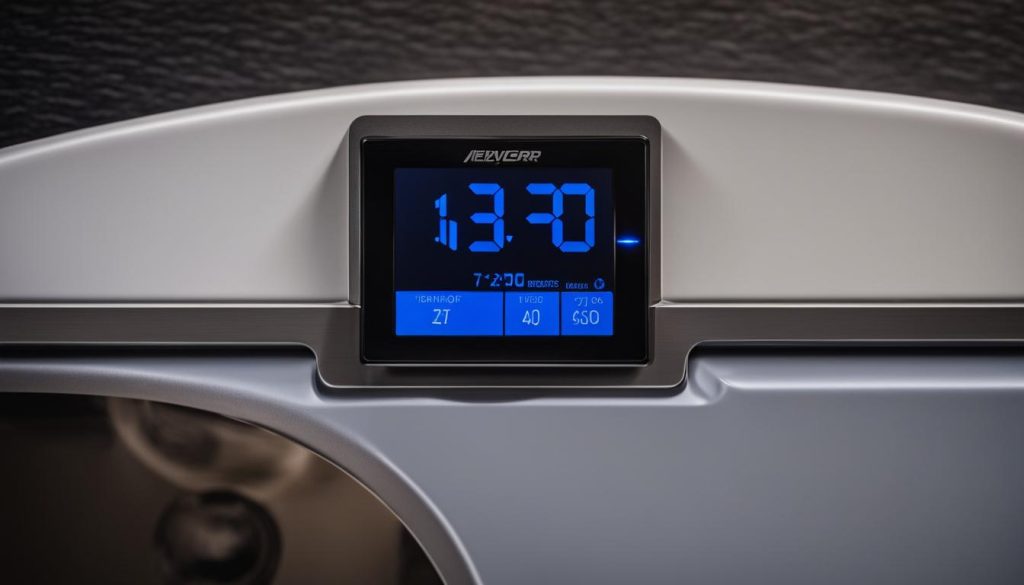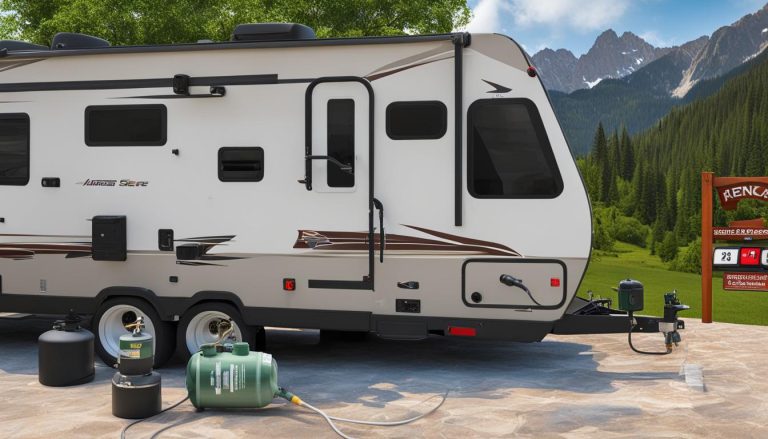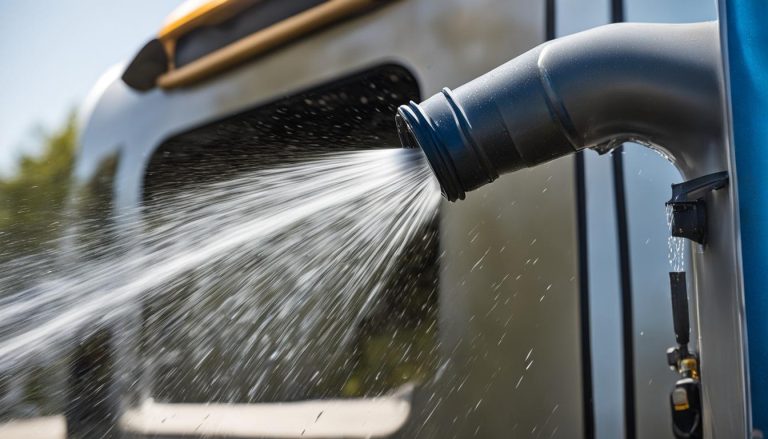Upgrade Comfort: How to Replace RV Thermostat
gorvlifestyle.com and its partners may earn a commission if you purchase a product through one of our links
Are you looking to upgrade the comfort in your RV? One essential component to consider is the RV thermostat. The thermostat plays a crucial role in controlling the temperature in your RV by regulating the furnace and air conditioner. Over time, your RV thermostat may need to be replaced to ensure optimal performance.
RV thermostats come in different types: analog, digital, programmable, and smart. Analog thermostats are basic and reliable, while digital thermostats offer precise temperature settings. Programmable thermostats allow for pre-programmed temperature adjustments based on time, while smart thermostats can be controlled remotely through a mobile app.
No matter the type of thermostat you choose, it’s important to understand the ins and outs of RV thermostat replacement. In this article, we’ll guide you through the process of replacing your RV thermostat, so you can enjoy a comfortable and cozy living space while on the road.
But before we dive into the details, let’s take a closer look at what an RV thermostat is and how it works.
Key Takeaways:
- RV thermostats regulate the temperature in your RV by controlling the furnace and air conditioner.
- There are different types of RV thermostats: analog, digital, programmable, and smart.
- Analog thermostats are basic and reliable, while digital thermostats offer precise temperature settings.
- Programmable and smart thermostats provide additional convenience and control over your RV’s climate.
- Replacing your RV thermostat can improve the comfort and efficiency of your RV’s heating and cooling system.
What Is an RV Thermostat?
An RV thermostat is an essential component that controls the temperature in your RV by regulating the furnace and air conditioner. Similar to a thermostat in a home, it allows you to adjust the temperature settings to heat or cool your RV accordingly.
An RV thermostat is responsible for maintaining a comfortable climate inside the RV, ensuring that you can enjoy your travels regardless of the weather outside. Whether you’re camping in the summer heat or seeking warmth during chilly winter nights, the RV thermostat enables you to create the perfect environment inside your home on wheels.
“An RV thermostat is like having a personal climate controller, allowing you to tailor the temperature to your preferences and enjoy a cozy experience on your RV adventures.”
How Do RV Thermostats Work?
RV thermostats play a crucial role in maintaining a comfortable climate inside your RV. These intelligent devices allow you to control the cooling and heating functions, ensuring the perfect temperature wherever you go.
When you adjust the temperature on your RV thermostat, it sends signals to the heater or air conditioner to reach the desired climate. The thermostat serves as the central hub that communicates with the HVAC equipment, instructing it to regulate the temperature in your RV.
Whether you’re camping in scorching heat or freezing cold, your RV thermostat’s job is to keep you comfortable with precise climate control. So, next time you want to cool down after a long hike or warm up during a chilly evening, simply tweak the temperature settings on your RV thermostat, and let it work its magic.
Types of RV Thermostats
| Thermostat Type | Description |
|---|---|
| Analog RV Thermostats | Analog RV thermostats are the traditional, reliable choice for many RV owners. They feature a simple temperature adjustment mechanism using a slider. While they may lack advanced features, they are easy to use and durable. |
| Digital RV Thermostats | Digital RV thermostats offer precise temperature control and a clear digital display. They often require electrical power to operate and may provide additional features like programmable settings for enhanced convenience. |
| Programmable RV Thermostats | Programmable RV thermostats allow you to pre-program temperature settings based on time. This feature can help you save energy and ensure your RV is always at the perfect temperature when you return from an adventure. |
| Smart RV Thermostats | Smart RV thermostats are the pioneers of climate control technology. These innovative devices can be controlled remotely through a mobile app, allowing you to adjust the temperature from anywhere. Some smart thermostats even integrate with other smart home technologies for a seamless experience. |
Whether you prefer the simplicity of analog thermostats or the advanced features of smart thermostats, there’s a perfect option to suit your RV’s climate control needs.
Do You Need a Special Thermostat for an RV?
When it comes to replacing your RV thermostat, you might be wondering if any regular thermostat will do. The truth is, RVs require a special thermostat designed specifically for their unique electrical components and wiring. So, the short answer is yes, you do need a special thermostat for your RV.
RV thermostats need to be compatible with the HVAC equipment installed in the RV. Unlike home thermostats, which typically operate on higher voltage, RV thermostats run on 12V DC power. This lower voltage requirement is necessary to ensure compatibility with the electrical system of your RV.
It’s also worth noting that Dometic air conditioners, one of the most popular brands for RV cooling, may require a specific brand or model of thermostat for proper compatibility and functionality.
So, if you’re planning to replace your RV thermostat, be sure to choose a special thermostat designed for RV use to ensure optimal performance and compatibility with your RV’s HVAC system.

| RV Thermostat Requirements | Home Thermostat Requirements |
|---|---|
| 12V DC power | Higher voltage (usually 24V AC) |
| Compatible with RV HVAC systems | Compatible with home HVAC systems |
| Potential compatibility requirements for specific RV AC brands | N/A |
Are RV Thermostats Different?
When it comes to RV thermostats, there is no one-size-fits-all solution. These essential devices come in various styles, types, and features to cater to different needs and preferences. Let’s explore the different types of RV thermostats available in the market:
Analog RV Thermostats
Analog RV thermostats are the traditional option for many RV owners. They are known for their simplicity and reliability. With an analog thermostat, you can adjust the temperature using a slider or dial. Although they lack the advanced features of digital or smart thermostats, they are straightforward to use and provide accurate temperature control. rv thermostat, analog rv thermostat
Digital RV Thermostats
For those seeking more precise temperature control, digital RV thermostats are an excellent choice. These thermostats feature a digital display that shows the current temperature and allows for precise adjustments. Digital thermostats often require electrical power to operate, so make sure your RV has a power source available. rv thermostat, digital rv thermostat
Programmable RV Thermostats
If you want to set up customized temperature schedules for your RV, a programmable thermostat is the way to go. These thermostats allow you to pre-program specific temperature settings based on time. This feature is particularly useful for optimizing energy efficiency and ensuring your RV is always at the ideal temperature. rv thermostat, programmable rv thermostat
Smart RV Thermostats
For the tech-savvy RV enthusiasts, smart thermostats offer a whole new level of convenience and control. These thermostats can be connected to your mobile device, allowing you to control the temperature remotely. You can adjust the temperature even before you step foot inside your RV. Some smart thermostats can even integrate with other smart home technologies, enhancing the overall comfort and efficiency of your RV. rv thermostat, smart rv thermostat
With a wide range of options available, you can choose the RV thermostat that suits your needs and preferences. Whether you prefer the simplicity of an analog thermostat or the advanced features of a smart thermostat, upgrading your RV thermostat can significantly enhance your camping experience.
What Voltage Are RV Thermostats?
When it comes to RV thermostats, understanding their voltage is essential for proper operation and maintenance. Unlike residential thermostats, which operate on 24V AC power, RV thermostats typically function using 12V DC power. This voltage is common among other DC devices in an RV, ensuring compatibility and efficient power distribution throughout the vehicle.
RV thermostats play a crucial role in maintaining the desired climate inside your RV. Whether you’re adventuring in freezing temperatures or basking in the summer heat, your thermostat regulates the furnace and air conditioner to create a comfortable environment. That’s why it’s important to have a clear understanding of the voltage requirements for RV thermostats.
To get a better idea of the distinction, let’s compare the voltage specifications of residential thermostats and RV thermostats:
| Thermostat Type | Voltage |
|---|---|
| Residential Thermostats | 24V AC |
| RV Thermostats | 12V DC |
As shown in the table, residential thermostats rely on 24V AC power, which is commonly found in traditional home heating and cooling systems. However, the unique electrical components and wiring of RVs require a different voltage. RV thermostats operate on 12V DC power, ensuring they are compatible with the RV’s electrical system.
The 12V DC power source is supplied by the RV’s battery system or the converter when connected to shore power. This power source is used to control the thermostat’s functions and communicate with the HVAC equipment, directing the desired temperature adjustments.
By understanding the voltage specifications of RV thermostats, you can ensure proper replacement, maintenance, and troubleshooting. Should you need to replace your RV thermostat, always ensure you select a model that operates on 12V DC power.

Now that you have a better understanding of the voltage requirements for RV thermostats, let’s explore how to identify signs of a malfunctioning RV thermostat in the next section.
How Do I Know If My RV Thermostat is Bad?
If you suspect that your RV thermostat is not functioning properly, there are some signs to watch out for. One common sign is unresponsiveness, where the thermostat does not react when you adjust the temperature settings. Another indicator is when there is no change in the temperature despite adjusting the thermostat. In some cases, the display may appear dim or completely dead, making it difficult to read or operate.
Another telltale sign of a bad RV thermostat is the continuous running of the furnace or air conditioner, even when the desired temperature has been reached. This can result in unnecessary energy consumption and discomfort inside your RV.
Several factors can contribute to the malfunctioning of an RV thermostat. Wiring issues, such as loose or damaged connections, can disrupt the proper functioning of the thermostat. Dead batteries can also cause the thermostat to fail. Additionally, dust and debris accumulation can affect the internal components of the thermostat, leading to performance issues.
Keep in mind that the typical lifespan of an RV thermostat is around 10 to 15 years. If your thermostat exhibits any of these signs or if it becomes unresponsive, it may be necessary to have it repaired or replaced to ensure proper temperature control in your RV.
FAQ
How do I replace an RV thermostat?
To replace an RV thermostat, follow these steps:
1. Turn off the power to the RV’s HVAC system.
2. Remove the cover of the existing thermostat.
3. Disconnect the wires from the old thermostat.
4. Remove the old thermostat from the wall.
5. Install the new thermostat in the same location, securing it to the wall.
6. Connect the wires to the corresponding terminals on the new thermostat.
7. Replace the thermostat cover.
8. Turn on the power and test the new thermostat.
What types of RV thermostats are available?
There are several types of RV thermostats available:
– Analog thermostats: These have a basic slider for temperature adjustment.
– Digital thermostats: These offer precise temperature settings and require electrical power.
– Programmable thermostats: These allow for pre-programmed temperature settings based on time.
– Smart thermostats: These can be controlled remotely through a mobile app and may integrate with other smart home technologies.
Can I use a regular thermostat in my RV?
No, you need a special thermostat for your RV. RV thermostats are designed to work with the different electrical components and wiring found in an RV. They also need to be compatible with the HVAC equipment installed in your RV. Using a regular thermostat may cause compatibility issues and result in improper functioning.
Do RV thermostats operate on the same voltage as residential thermostats?
No, RV thermostats typically operate on 12V DC power, which is the same as other DC devices in an RV. In contrast, residential thermostats operate on 24V AC power. It’s important to use the correct voltage thermostat in your RV to ensure proper operation.
How long do RV thermostats last?
The typical lifespan of an RV thermostat is around 10-15 years. However, this can vary depending on usage and maintenance. If your thermostat becomes unresponsive or shows signs of malfunction, it may need to be repaired or replaced.
What are the signs of a bad RV thermostat?
Signs of a bad RV thermostat include unresponsiveness, no change in temperature settings, a dim or dead display, and the continuous running of the furnace or air conditioner. These symptoms can be caused by wiring issues, dead batteries, or dust accumulation. If you experience any of these issues, it may be time to replace or repair your RV thermostat.






